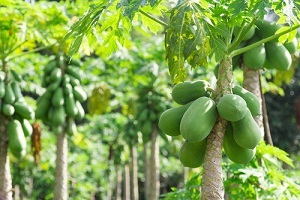Increased crop yield, enhanced nutrient content, improved herbivore resistance and overall improved product quality are a few important advantages of agricultural biotechnology, according to a new academic paper.
The paper, entitled "Food and Energy Security," was written by Virginia Tech researchers Eric Hallerman and Elizabeth Grabau. It aims to combat misconceptions the public has adopted regarding the health and ecological risks associated with genetically engineered (GE) crops.
One of the main challenges the agricultural industry faces is how to meet the demand for food without depleting nonrenewable natural resources and wreaking havoc on the environment. According to the World Health Organization, food security is defined as “including both physical and economic access to food that meets people's dietary needs as well as their food preferences.” To meet the growing need for food globally, National Research Council 2015 projected that drastic advances in food production and distribution are necessary.
Not only is there a necessity for support for basic science to advance plant biotechnology, but there's also a need for translating new discoveries that benefit the poor in developing countries.
“We regard this as a pivotal moment for regulatory action and practical adoption of agricultural biotechnology, a moment when decisions made within the next few years will have major bearing on the realization – or failure – of its potential for improving global food security,” the paper said.
In 1996, the Roundup Ready soybean was produced by Monsanto and approved for commercial use in the U.S., igniting a rapid increase in the use of GE crops. Despite the advantage of GE crops, some sectors of the developed world raised concerns about the use of GE crops – concerns that spread to developing countries but are disputed by scientific evidence, according to the paper.
These negative attitudes have bearing on the future of GE crops and complicate the adaptation of GE crops.
According to researchers, in 2014, 181.5 million hectares of GE crops were planted in 28 countries with the most production (73.1 million hectares) in the United States. Brazil produced 42.2 million hectares; Argentina, 24.3 million; Canada, 11.6 million; and India 11.6 million.
A global total of 18 million farmers planted GE crops; the vast majority (16.9 million) were small farmers in developing countries. Soybeans made up 82 percent of GE crops, followed by cotton (68 percent), corn (30 percent) and canola (25 percent). The most common GE traits are herbicide tolerance and insect resistance.
Disease-resistant papaya is one of the little-known victories in GE agricultural plants. Cultivated worldwide in the tropics and subtropics, papaya is mainly produced in Brazil, Mexico, Nigeria and India. In 2005, approximately 6.75 million tons of papaya were produced worldwide.
Papaya ringspot virus (PRSV) poses a significant threat to the production of papaya. Since 1998, GE papayas resistant to PRSV have been produced commercially in Hawaii. With approval from government regulators, GE virus-resistant papaya are said to have saved the industry there.
In 2006, a GE virus-resistant papaya was approved and now is in commercial production in China, and a cooperative effort involving international organizations from India, Indonesia, Thailand, Malaysia, the Philippines and Vietnam aims to develop a GE virus-resistant papaya for Southeast Asia.
With such encouraging advancement in agricultural biotechnology come many hurdles. Activists opposing GE crops destroyed papaya trees in Hawaii on at least three occasions, and legislation that would apply restrictions on agricultural biotechnology have been heavily debated in Hawaii. In addition, importing GE papayas into the European Union is not allowed; and a test plot of transgenic papaya in Thailand was destroyed by Greenpeace activists in 2004, despite virus-resistant papaya being a GE crop that favors the poor.
The new paper states that the adoption of GE crops has advanced more in developed countries than in developing ones. An example is insect-resistant Bt cotton, which has been widely planted in a number of both developed and developing countries. In fact, most cotton in India is GE and has provided tremendous economic benefit to many small producers. But when it comes to GE food crops, there is significant resistance in India.
Despite the controversy, GE crops are being developed by large multinational corporations, universities, government agencies, small companies and nongovernmental organizations that are in the process of seeking regulatory approval for GE crops such as Bt eggplant in India, rice in China and Iran, potatoes in Russia, disease-resistant peppers and tomatoes in China, and drought-resistant sugar cane in Indonesia.
“We conclude that educating and informing the public to combat misperception, and implementing review of regulatory guidelines based on decades of experience can help to realize the benefits of GE for food security, human well-being, and ecological sustainability,” the paper said.




 Alerts Sign-up
Alerts Sign-up